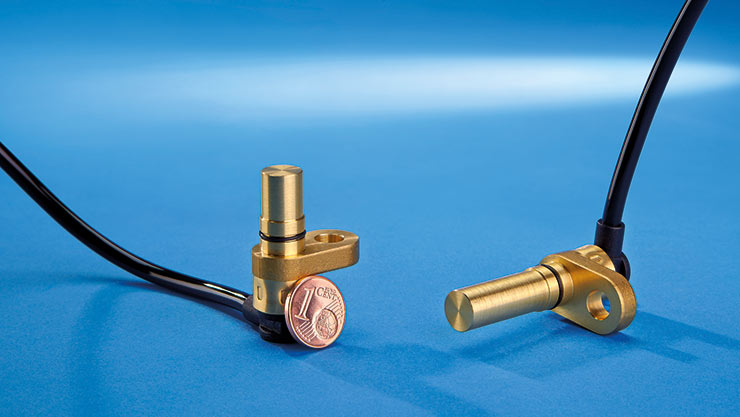Timely, contactless detection of the speed in modern mobile hydraulic control loops is an important parameter. The Rheintacho speed sensor of the FE series is a compact, robust and versatile design that is available in two different immersion depths — 18.4 and 32 mm, available as standard. This offers the possibility to select the optimal sensor for the respective installation conditions.
 Peter Cisar, Head of Development at Rheintacho, is enthusiastic about the FE series. “With the FE series, we offer a speed sensor family that offers a variety of different signal outputs in a compact design – in addition to meeting the highest protection requirements with IP67 and IP6K9K.”
Peter Cisar, Head of Development at Rheintacho, is enthusiastic about the FE series. “With the FE series, we offer a speed sensor family that offers a variety of different signal outputs in a compact design – in addition to meeting the highest protection requirements with IP67 and IP6K9K.”
Another technical detail to increase flexibility is the deliberate avoidance of a connector integrated directly on the sensor body. This reduces the risk that the connector is located at a structurally unfavorable point in the overall system. Another advantage of the cable outlet is the relocation of the connector to a more suitable position, especially with regard to environmental conditions such as moisture, dirt/dust as well as vibration. In particular, vibration should not be underestimated. The space requirement of common connector systems is also disadvantageous in relation to this very compact sensor — an important aspect in restricted installation positions. For optimal protection against the ingress of moisture, connectors molded directly onto the cable or molded on the back are used.
Using different magnetic measuring principles, all Rheintacho sensors record the speeds of rotating machine parts in a range from 0 to 30,000 rpm.
Today, Rheintacho offers the FE series with these different output signals: 1-channel (for speed detection), 2-channel (for detection of speed and direction of rotation) and a pulse-width modulated current signal (also speed and direction, as well as diagnostic options).
The advantages of the FE concept are obvious: A sensor series which is specified and approved for an application. The mechanical interfaces are identical, regardless of which signal you or your users choose. With the Rheintacho FE series, you choose the right speed sensor precisely for the requirements of the application.
Rheintach Messtechnik GmbH
www.rheintacho.de
Filed Under: Mobile Hydraulic Tips, Sensors